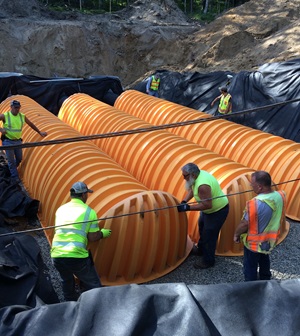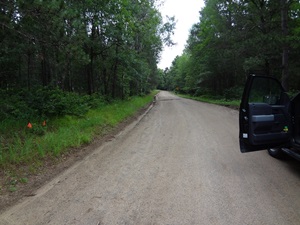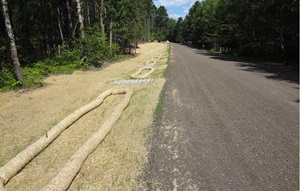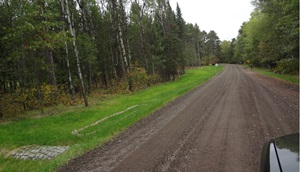Calming a ‘stormy’ situation: Halting erosion and holding back storm water run-off in Minnesota
Hubbard County SWCD uses rain gardens, rock-check dams, retention chambers to slow the flow
Canoes floating on front lawns are generally the stuff of national TV newscasts.
But on Deerview Road, in Minnesota’s Henrietta Township, it was getting to be a semi-regular occurrence.
“One landowner at the low point (of the road) took a video in a one-and-a-half-inch rain event, and you could kayak on the stream running through his yard to the lake,” recalls Julie Kingsley, district manager with the Park Rapids-based Hubbard County Soil and Water Conservation District.
“This year, we had three five-inch rain events—two of them before we addressed the problem.”
Address it they did, during a month-long span this past summer.
In collaboration with the township, Hubbard County SWCD installed a storm-water and erosion reduction system along Deerview Road to prevent untreated storm water run-off from flowing directly into Long Lake—one of the 200 most phosphorous-sensitive lakes in Minnesota.
Designed for a 100-year storm event, the system included a series of rain gardens and rock-check dams along the widened road, designed to retain storm water, hold back sediment, and allow infiltration. The system also included three underground storm-water retention chambers for further infiltration.
Image gallery: Slowing storm water's flow in northern Minnesota
The project was carried out in part with a $105,000 donation from Enbridge’s Ecofootprint Grant Program. The Ecofootprint program was established in 2015 to support environmental restoration and improvement efforts in the communities crossed by our Line 3 Replacement Project.
“Back in the 1930s, some cabins were built along Deerview Road, but it was never improved—and stormwater run-off was not considered in surveying work that was done afterward,” says Kingsley. “This project was a great example of a soil and water conservation district working seamlessly with a township to solve a problem that had existed for a long, long time.
“In fact it went so well that other townships, and even the county, have approached us to work on other problem road areas.”
And yes, says Kingsley, the new system does what it was supposed to do.
“It has remedied the problem. We’ve had a four-inch rain event since it was put in, and the storm water didn’t go anywhere. The rain gardens were dry; everything was dry. The new system handled it.”
(TOP PHOTO: This system along Deerview Road includes a series of rain gardens and rock-check dams along the widened road, designed to retain storm water, hold back sediment, and allow infiltration.)











